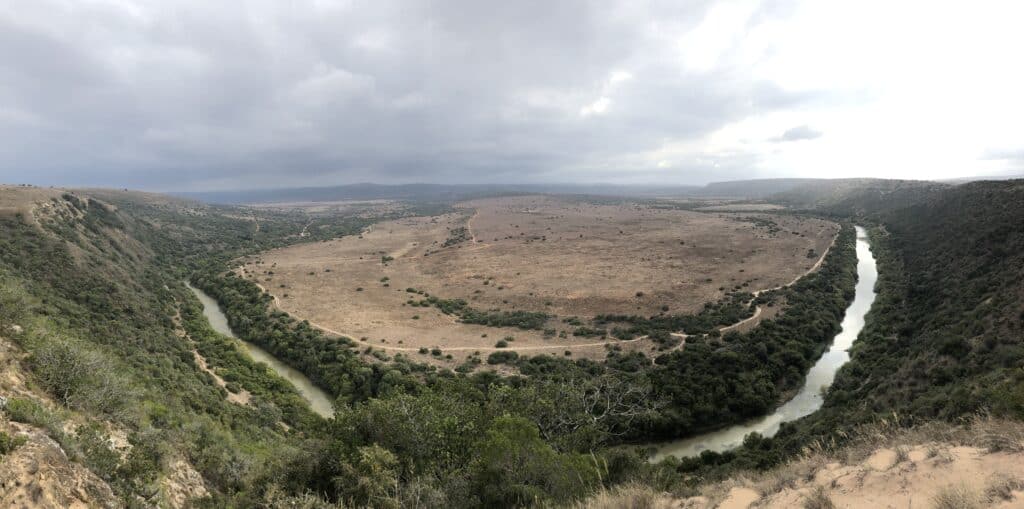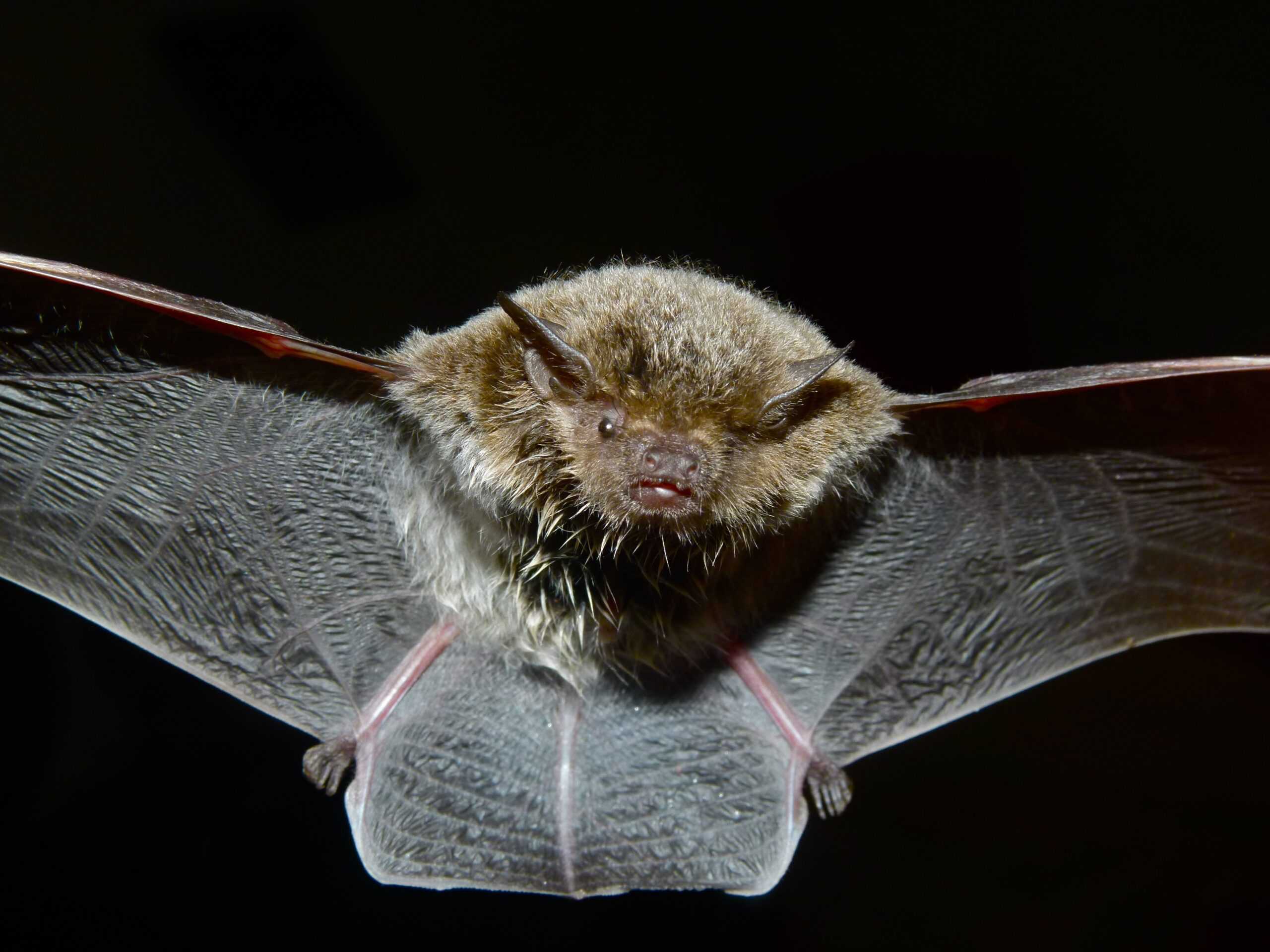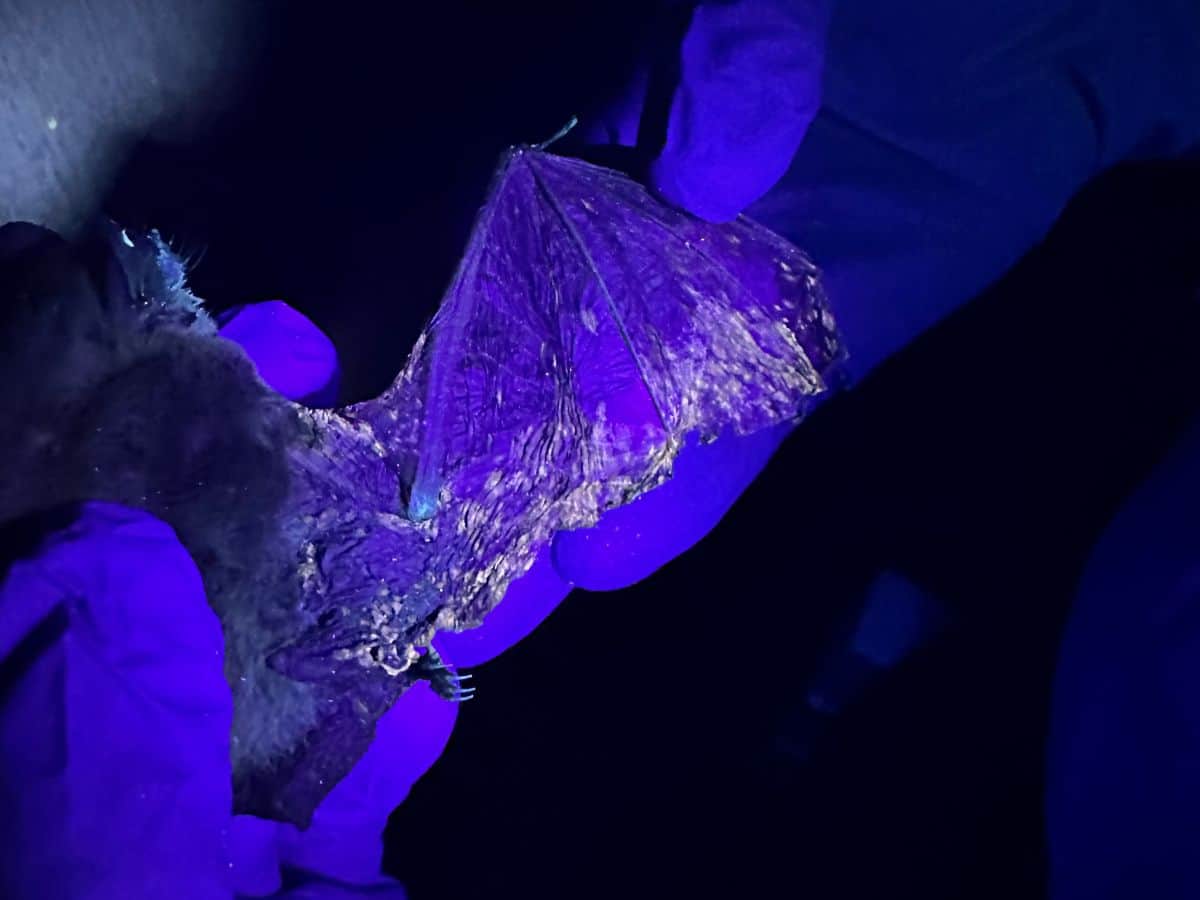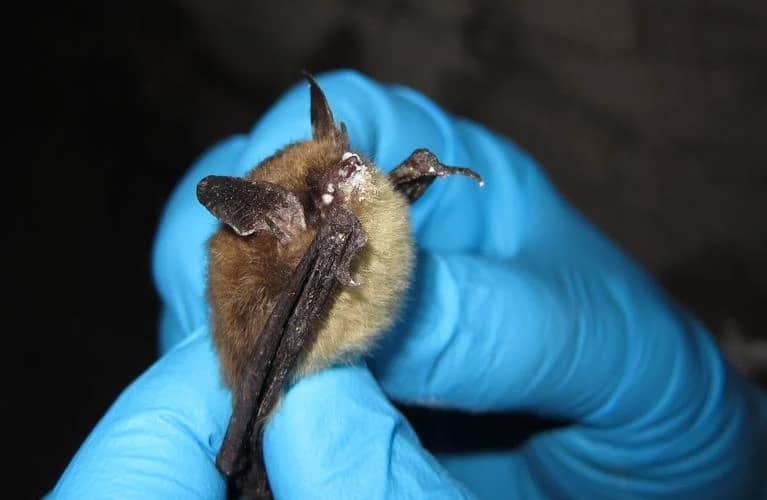Share this article
Wildlife Featured in this article
- Cape horseshoe
- Geoffroy’s horseshoe bat
- Botswana long-eared bat
- Cape serotine bat
- Natal long-fingered bat
- Egyptian free-tailed bat
- Lesser woolly bat
JWM: Swimming pools boost South African bat numbers
Artificial water sources could help populations experiencing a drought
There’s nothing better than having a meal and drink by the poolside—whether you’re a human or a bat.
Researchers have found that these artificial water bodies may be an important foraging and drinking resource for bats as South Africa climate gets dryer due to global warming.
“If bats can locate and access [swimming pools], then they’ve got water all year round if they need it,” said TWS member Tory Bennett, an associate professor in environmental and sustainability sciences at the Texas Christian University.
The Amakhala Game Reserve in the Eastern Cape of South Africa sits on land that Dutch colonists converted for farming. But with ecotourism becoming more popular, the property was transformed to a game reserve.
Bennett wanted to get a better idea of bat population success there, since the taxa is an indicator of ecosystem health. She had previously noted bats using swimming pools to forage and drink in Texas and wondered if they may be using swimming pools at several different hotels on the reserve.
Poolside listening
Bennett and her colleagues surveyed bats using acoustic detectors set up around swimming pools at the tourist lodgings on the reserve. For a study published recently in the Journal of Wildlife Management, Bennett and her graduate student James McGee analyzed data collected from detectors at two pools from July 2018 to December 2020.
They recorded 24,909 bat echolocation calls above the swimming pools and identified seven out of 23 local species: Cape horseshoe bats (Rhinolophus capensis), Geoffroy’s horseshoe bats (R. clivosus), Botswana long-eared bats (Laephotis botswanae), Cape serotine bats (Neoromicia capensis), Natal long-fingered bats (Miniopterus natalensis), Egyptian free-tailed bats (Tadarida aegyptiaca), and lesser woolly bats (Kerivoula lanosa).
Since bats have distinct echolocation calls for different activities, researchers can identify specific resource use, including whether bats were approaching a water source, drinking or foraging. By analyzing the recordings, the team found 1,374 calls related to foraging and 9,286 calls related to drinking.
These results suggest that bats were mostly using the swimming pools for drinking water, while some bats were feeding above these pools, perhaps on insects attracted to the water. But use depended on species. For instance, the Cape serotine and Botswana long-eared bats were using the pools more as a drinking source, while Egyptian free-tailed bats used them for foraging more, and Natal long-fingered bats used the pools more evenly for both. Researchers could tell that these species were approaching the water surface but recorded no distinct feeding or drinking calls, potentially because calls from these species are so high frequency that are difficult to detect and record. They were certainly using pools as a resource though, Bennett said.

Potential sanctuary
While the International Union for Conservation of Nature doesn’t list any of the seven bats as conservation concern, five of the 23 species found locally are designated vulnerable. Pools might provide a buffer for bats—natural water sources in the area are increasingly drying up due to climate change, and this area has been experiencing a long drought. But swimming pools represent a permanent source of water.
“The take home message, so far, is that we should not exclude swimming pools as a potential water resource for bats,” she said, adding that migrating bats could use them as a stopover resource while residents can use them all year. “They may not have another choice at this point.”
In future research, she plans to use cameras to get a better idea of what the species are doing at the pools, particularly among the horseshoe and woolly bats. She and her colleagues also want to compare how bat activity and resource use above swimming pools compares with activity and use above natural water sources in the area. This could reveal why bats are choosing to use these pools in the first place.
This article features research that was published in a TWS peer-reviewed journal. Individual online access to all TWS journal articles is a benefit of membership. Join TWS now to read the latest in wildlife research.
Header Image: Cape serotine bats used swimming pools in South Africa as a drinking source. Credit: Bernard DUPONT








